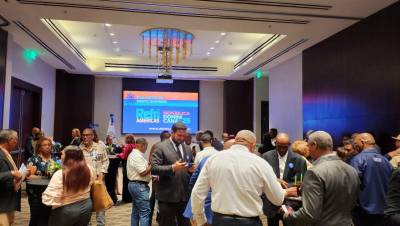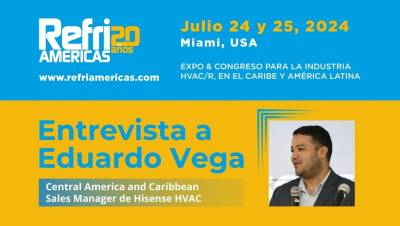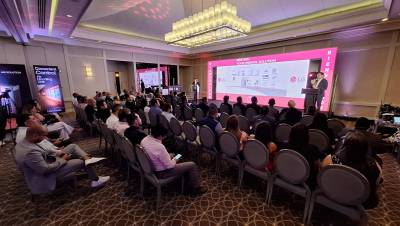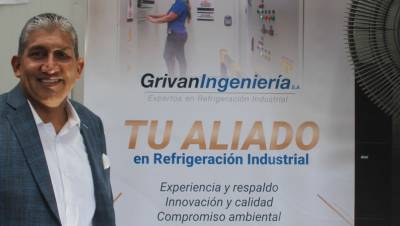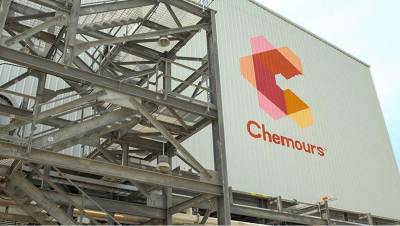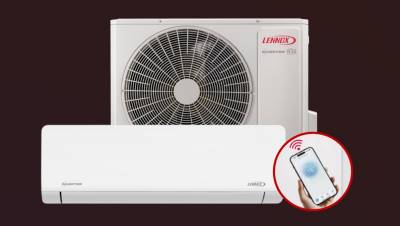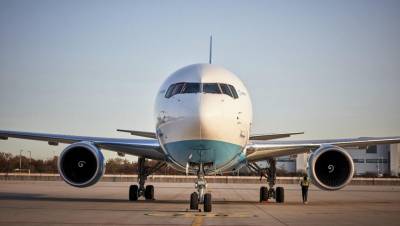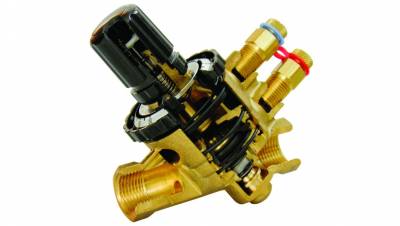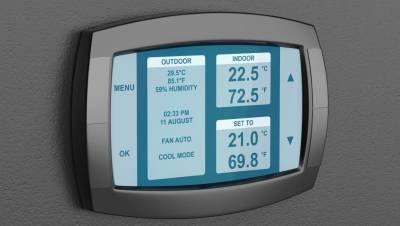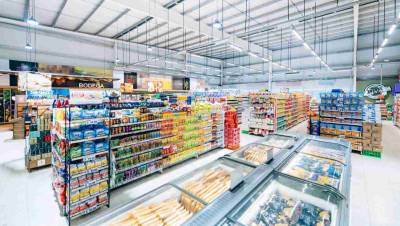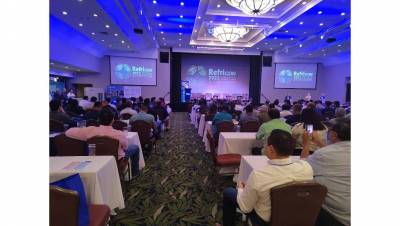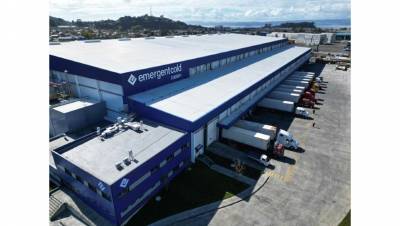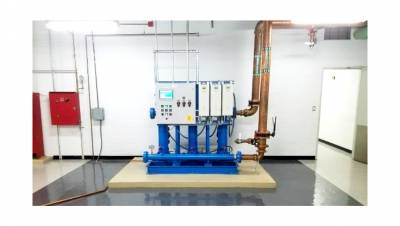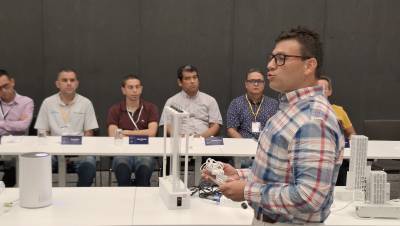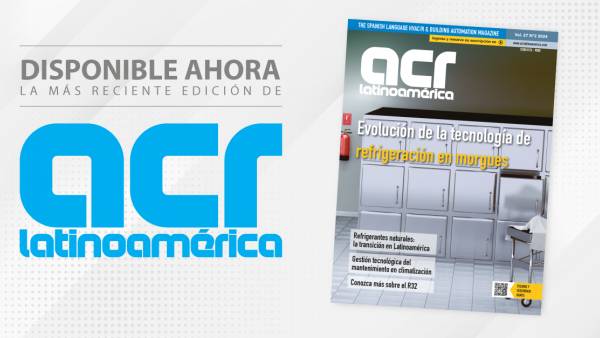Ventilation and air conditioning systems must create a psychologically satisfactory environment and hygienic indoor air. Air conditioning systems must be designed, designed, used and maintained in the best conditions, in such a way that they do not present a health hazard or environmental or thermal discomfort and do not produce odors. The use of air in recirculation is only advisable if it can be ensured that the concentration of contaminants, microorganisms and odours does not exceed safe limits. This communication describes the sanitization (cleaning) procedures of ventilation and air conditioning systems (AVAs), determines the evaluation procedures that define when cleaning is necessary, defines the procedures for verifying the effectiveness of the cleaning carried out, both in ventilation and air conditioning systems (AVAs) and in their components and, finally, the hygienic standards to be applied in each case are agreed as a reference.
Introduction
The design, the cladding materials and the greater tightness of the so-called occupational buildings (offices, shopping and leisure centers, public buildings, homes, etc.) makes the adverse effects on health derived from a poor quality of breathable indoor air increasingly relevant.
These effects are enhanced by additional factors:
• The high percentage of time that man spends in indoor environments.
• The occupants themselves as a source of pollution: tobacco smoke, carbon dioxide (stale air), water vapor, particles and bioaerosols (bacteria, viruses, etc.)
• Greater variety of pollutants in indoor environments than in industrial work environments.
• Recirculation of air conditioning air for energy saving.
• The polluted environment of the building environment (combustion gases from boilers, vehicles, industries, etc.)
• The products and materials used (cleaning, air fresheners, photocopiers, paper and cardboard, etc.)
Acceptable air quality is defined as air that does not contain polluting substances in such quantities that they are harmful to health and whose quality is satisfactory for 80% of exposed persons (UNE 100011/91). You must ensure that substances that may be harmful to health or produce odors cannot enter the air. Thus, the "breathable indoor air", provided by the SVAA, must be an air of "acceptable consumption quality", free of additives! (free of air fresheners, disinfectants, ozone, etc.
Ventilation and air conditioning systems must create a psychologically satisfactory environment and hygienic indoor air. Air conditioning systems must be designed, designed, used and maintained in the best conditions, in such a way that they do not present a health hazard or environmental or thermal discomfort and do not produce odors. The use of air in recirculation is only advisable if it can be ensured that the concentration of contaminants, microorganisms and odours does not exceed safe limits.
It is of great importance to have a regular maintenance service, an operating control as well as a monitoring of hygienic conditions in the indoor environment.
The object and scope of sanitation procedures in ventilation and air conditioning systems (HSAs) should serve as a reference for owners and users of buildings, considering their design, activity, manufacturing materials, facilities and maintenance operations. On the other hand, the evaluation procedures that define when cleaning is necessary must be determined, as well as the procedures for verifying the cleaning efficiency carried out, both in the ventilation and air conditioning systems (SVAA) and in their components and, finally, the hygienic standards to be applied in each case will be taken as a reference.
Scope of Application
The system of action will be applicable to ventilation and air conditioning systems that affect the quality of breathable indoor air.
In the sanitization, the greatest possible degree of contaminants and dirt deposits that are present (visible or not visible) should be removed.
All the elements of the SVAA are considered to be included, from the moment the air enters until it leaves, as well as all the surfaces of the same related to the distribution of circulating air. The ceiling and floor plenums are also included as they are an integral part of the air distribution system.
The considerations and requirements set out above apply to all classifications of buildings, according to their activity, except those with special considerations.
Evaluation, cleaning and verification
Initial Assessment Project.
Any decontamination work must obey the guidelines of a project that facilitates the client's comparison of offers and, ultimately, allows him to know at least, and prior to the start of operations, the scope of the same, the technique or techniques to be used, the needs and form of accessibility to the ducts, the needs of help (masonry, carpentry, etc.), in addition to the risks or possible indefinitions in the execution. It is desirable that it includes the waste removal procedure and must correctly inform of the chemicals to be used.
The project must include:
1. Classification of the building.
2. Pollution assessment.
3. Execution and Evaluation Plan.
Classification of the uses of the building:
• Industrial.
• Residential, flats, apartments, residential homes.
• Offices.
• Commercial.
• Restaurants, food.
• Toilets.
• Special use areas. These include those related to clean rooms, laboratories and/or other areas with specific environmental requirements.
• Multipurpose, combined uses.
Pollution assessment.
Inspections
The components of the SVAA are considered contaminated when there is evidence of particulate matter and/or microbial growth inside, both by visual inspection and analytical verification. The assessment shall be carried out by inspection by the SVAA. The types of contaminants present as well as their concentration will determine the cleaning methods to be used and the environmental controls required.
The elements to be inspected shall be at least the following:
1. UTA. The evaluation of the Air Handling Units will consider representative sections of their components: filters, air bypass, batteries, condensate trays, sound insulation, humidification systems, and fans.
2. Drive duct system including variable volume boxes or equivalent, plenums, silencers and thermal insulation, heating and cooling batteries, diffusers and other existing components.
3. Return duct system including return plenums, shock absorbers, thermoacoustic insulation, turbines and grids, as well as extraction ducts and turbines.
Prior inspection. Determination of the need for cleaning and verification of it.
• For the determination of both the need for cleaning and its effectiveness, an inspection of the SVAA will be carried out and the verification procedures and standards proposed in Annexes nº 2 and 3 of the UNE 100012 standard will be applicable.
• The verification will consist of (a) visual inspection of the elements of the HVAS (b) a check of the "condition of the surfaces" and (c) the performance of a check of the "quality of the ventilation air". It is recommended that the verification be carried out by specialized and independent control entities.
• SVAAs should be sanitized when inspection shows that the system is contaminated with significant accumulation of particulate matter and/or microbial growth. Cleanup is also necessary when there is contamination in the SVAA in newly constructed buildings.
• Verifications must be integrated into the preventive maintenance program of buildings and the indoor air quality management system.
• The verification frequencies described below (see table 1) should be considered as minimum recommendations, and the need to increase them will depend on the environmental conditions, the activity, and the mechanical and human conditions of the building and its surroundings.

System inspection.
It is recommended to carry out a prior inspection with the client in case there is something deteriorated that must be verified in writing.
An adequate visual, microbiological and particulate matter inspection (measurements of inert dust and/or fibres) must be carried out on the surface.
Visual inspection:
Specialized tools such as borescopes, periscopes, mirrors, and robots can be employed to perform the inspection. When a visual inspection is carried out, it should be observed if there are visible contaminants within the system.
The inspection protocol will be designed and executed by a hygiene specialist and must include at least a number of significant points of the system to be cleaned, basing the number of them in proportion to the dimensions, design of the system and network of ducts. By way of orientation, the minimum number of points for each air conditioning system will be "three" (1 point of Air Conditioning, 1 point of Impulsion, 1 point of Return). For floors of buildings with several air conditioning systems (constant volume, variable volume) and shared return system, the minimum number of sampling points will be 1 for each Air Conditioner, 1 for each air conditioning system in Impulsion, 1 in Shared Return. The layout and design of the floors of the building (wings, orientations, situation of the ATUs, etc.) will be taken into account. A technical report of the state of the facilities will be prepared.
Preparation and evaluation of the place. The company will deliver a plan that specifies in a coordinated way how each area of the building should be protected during the different phases of the project.
Microbiological inspection.
The Microbiological Sampling Plan must be carried out in accordance with the sampling method specified in Annex 2 of the UNE 100012.
The inspection should evaluate the UTA, the humidification system, the air and duct surfaces, and any other representative areas of the SVAA that are considered to be microbial growth.
The inspection must be carried out by personnel with experience in the design and operation of the SVAA, experience in sampling practices of indoor environments and application of comparative standards.
If there is evidence of microbial growth, sanitation is a necessary practice.

Inspection of particulate matter.
The Particulate Matter Sampling Plan must be carried out in accordance with the sampling method specified in Annex 3 of the UNE 100012 standard.
If the SVAA discharges visible particles into the conditioned interior space or there is a contribution by the same to the concentration found of air particulate matter in suspension (inhalable fraction and respirable fraction) or there is a concentration (see table 2), per unit of sampled surface, greater than the recommended limit for the consideration of "dirty" (> 1 g / m2 – Aspiration Test - see annex3), sanitization is of necessary execution.
During the execution of the cleaning works, procedures and controls must be established to guarantee the absence of migration of contaminants from the area to be sanitized to other spaces of the building and the absence of damage to the equipment of the conditioned space.
Supplier Requirements.
The minimum requirements to be met and to be provided by suppliers providing sanitation services are listed below.
1. Certifications.
2. Qualifications of the operating staff.
3. Experience.
4. Licenses.
5. References.
6. Quality Assurance.
7. Equipment: General and minimum requirements.
Minimum required of a collector equipment with absolute filtration class H-12 HEPA (HEPA filtration 99.97% will be used effectively for particles of 0.3 microns in size) and equipment necessary to comply with at least two of the three cleaning methods recommended here.
Suction devices must have sufficient contaminant collection power to ensure contaminant retention and protection of the indoor environment. For this they will have some requirements of:
- Minimum depression, greater than 5 Pascals.
- Speed of capture of contaminants, evacuation in duct, depending on the type of contaminants, minimum of 12 m / sec (fine and light dust, <10 μm in diameter) to 17 m / sec (coarse dust,> 10 μm in diameter ).
The sections of the ducts to be sanitized should be taken into account to assess compliance with the "minimum depression" and the "speed of capture". These technical characteristics must be verifiable in the technical data sheets of the equipment and included as information in the "execution plan".
8. Personnel.
9. Occupational Risk Assessment.
10. Safety and Hygiene Measures.
11. PpE Personal Protective Equipment.
12. Documentation (plans or scheme of the installation, studies and analytical data, schedule of tasks for each work area).
13. Warranties.
14. Insurance Coverage.
15. Education and training.
Description of the Sanitization Work.
General.
The work of this section includes the removal of dirt, bacteria, dust, fungi and debris that accumulate inside the ducts and in the ventilation and air conditioning equipment of the areas indicated by the owner or contractor.
All elements of the SVAA should be cleaned according to these recommendations. The sanitization methods must be used in such a way that all the components of the HVAA must be visibly clean and capable of passing the defined verification controls (see Annexes 2 and 3 of the UNE 100012 standard).
The ventilation and air conditioning system includes any interior surface of the SVAA from the points where air enters the system to the points where the air is discharged. Including return air ducts, return grilles, U.T.A. surfaces, mixing boxes, batteries, condensate trays, humidifiers and dehumidifiers, drive ducts, fans, drop separators, filters, plenums, drive diffusers, support batteries and all parts of the system including air extraction are considered.
Cleaning procedures will not cause damage to the structure of the SVAA.

Openings of records in pipelines.
The registers shall facilitate the sanitization of inaccessible areas and shall be of sufficient size to allow cleaning procedures to be carried out.
The access records, the number of them and the distance and location to be installed must comply with the specifications of the different regulations such as the Regulation of Thermal Installations of Buildings and the UNE standards mentioned in it, as well as with any local, regional or national regulations, regarding fire prevention.
Considerations on the need for disinfection.
Disinfection consists of destroying pathogenic microorganisms and reducing microbial colonization to very low levels.
Biocidal substances should only be used in cases of active fungal growth or when levels of indoor bacteriological contamination that are considered unacceptable (bacterial amplification to indoor environments) have been verified through testing.
The use of biocides in an Air Ventilation and Conditioning System (HVAC) will be considered only after adequate sanitation has been carried out, and when the need for such treatment has been determined by the technical manager of the microbiological inspection carried out prior to cleaning (reality of bacterial amplification to indoor environments). Biocides should never be used as substitutes for cleaning.
In the required cases, biocidal products shall be applied by controlled sections of the duct network, and the corresponding efficacy tests shall subsequently be carried out (Annex 2).
Disinfection treatments must comply with existing regulations on biocidal products (R.D. 1054/2002). Likewise, the provisions of Order 210/95, Order 809/94 and Order of March 8, 1994, which establishes the regulations governing the homologation of training courses to carry out treatments with pesticides.
Any biocide used in the disinfection of Ventilation and Air Conditioning Systems (SVAA) must have the relevant authorizations according to the General Directorate of Public Health (DGSP) and the General Directorate of Pharmacy and Health Products (DGFPS), according to the scope and specificity of marked use (UTA surfaces, duct surfaces).
Disinfectant products should never be applied by continuous treatment. Disinfection should never be applied in the presence of people. The choice of a disinfectant will depend on the function for which it will be used and the degree of disinfection required, according to the results of previous microbiological analyses.
Disinfectants will only be applied following the manufacturer's instructions.
After disinfection, and prior to the return to the building, safety times must be kept until the total degradation / disintegration of the active disinfectant ingredient applied. The Technical Safety Data Sheet of the products to be used as well as their Sanitary Registers must be required, always checking that they are adapted, in their specifications of use, to the different types of surfaces to be treated.
Verification test.
Decision methods. It is advisable to carry out an analytical verification, before and after sanitization, as a control of the effectiveness and quality of the duct cleaning process.
The methods for verifying the status of HSAs and sanitation shall consist of a particulate matter test and a microbial flora test, the methodology of which is described in Annexes 2 and 3.
Definition of acceptability levels.
Decision standards.
Standards for the qualification of the dirt status of the SVAA and standards for checking the effectiveness obtained after the completion of a sanitization of the SVAA are proposed. CFU (Colony Forming Units)

Report type of activity performed. Service delivery.
A log book shall be attached with the final cleaning certificate which shall include at least the following elements: technical characteristics of the cleaned system, diagram of the cleaned installation with location of access doors, memory of equipment, products and methods used in the cleaning of ducts, graphic report of the services performed (before and after), results of test measurements, indoor air quality measurements and surfaces, before and after cleaning, ratio and safety sheets of the products used, test recommendations and hygienic maintenance.Authors:

